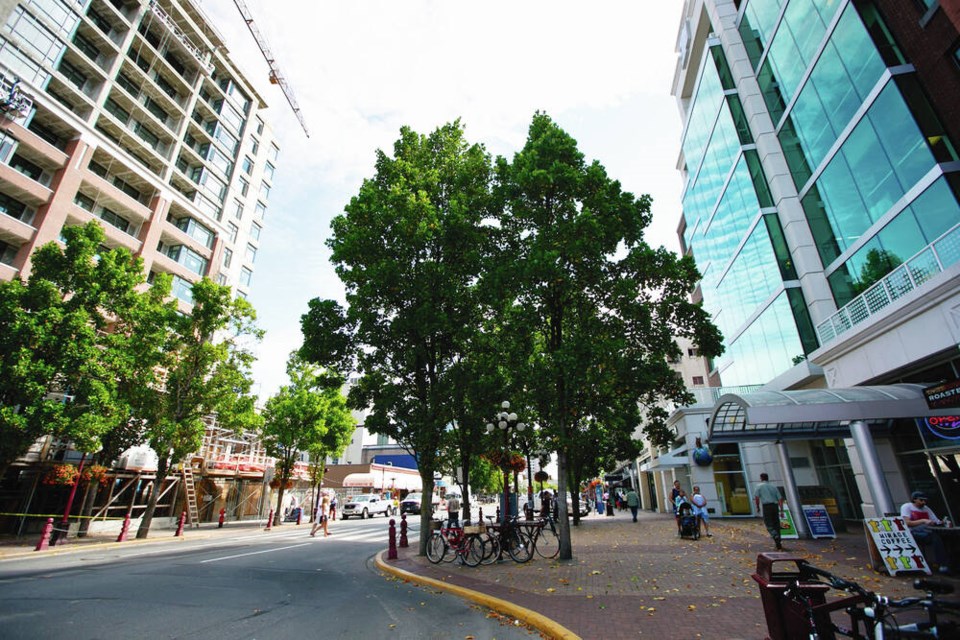It is said that it takes a whole village to raise a child, not just the family and the school.
Similarly, the most important message in the decades-old global Healthy Communities movement that I helped to create is that it takes efforts at all levels and across all sectors to create a healthier community.
So while the health-care sector is obviously needed, it is not the most important contributor to the health of a community.
These lessons apply equally to community safety. While a good police force is necessary, it is not sufficient to create safety; it takes the whole community to do that.
And what is true of a healthy community – that it is built one home at a time, one street at a time, one block at a time and one neighbourhood at a time — is equally true for creating a safer community.
As my last two columns have pointed out, community safety is a complex, indeed a “wicked” problem, requiring a complex, sophisticated, long-term and comprehensive set of approaches.
One of the global champions of this approach is Irvin Waller, an emeritus professor of criminology at the University of Ottawa. Waller has helped shape policy and practice in a number of countries and at the UN, where he is renowned for championing the recognition of the rights of victims.
Above all else, Waller emphasizes the science of community safety and crime and violence prevention. In blogging about his 2019 book Science and Secrets for Ending Violent Crime, Waller wrote: “Study after study confirms that smart investments in preventing violence before it happens are more effective and cost effective than the status quo of police and prisons.”
Moreover, he adds: “Investing in effective violence prevention is more affordable and successful than policymakers think; a modest equivalent of 10 percent of what they spend on police, courts, and corrections will do it and often before the next election!”
He emphasises not only being tough on crime but “tough on causes”: A 2021 policy brief he co-authored for the Canadian Municipal Network on Crime Prevention notes: “Solid prevention science identifies actions where violent crime has been reduced by 50% better than the status quo.”
Scientifically proven prevention programs noted in the brief include engaging and supporting young males, supporting positive parenting and early childhood, strengthening anti-violence social norms, mitigating financial stress and improving the physical environment.
His work has greatly influenced work of the network, which was founded in 2006. The network provides ready access to international and national evidence-based crime-prevention programs and practices, mentorship, and support from community safety specialists and peer practitioners, as well as workshops and training.
Regrettably, not a single municipality in the capital region is a member of this network, even though membership fees for all of them except Saanich are under $1,000 ($1,100 for Saanich). So protestations that municipal councils here are concerned with community safety and crime prevention are not matched by their actions.
One of the key steps emphasized both by Waller and the network is to create a “responsibility centre”– some form of permanent community safety and crime prevention council, which in our case should be regional.
It would bring together key players and stakeholders from across the region, including, of course, the police, but also schools, social agencies, businesses, community members and municipal governments.
Together, they would create a community safety and crime prevention plan and engage the whole community in that work.
Closer to home, we have the work of Steve Woolrich of Rethink Urban, who wrote a series of columns on community safety in this newspaper in the summer of 2020.
He is also the vice-president of Crime Prevention Through Environmental Design Canada. In his columns and in his work, he stresses the importance of a “full spectrum” approach linking safety, design, planning and health, engaging the community in what he calls a “circle of compassion”.
You will have an opportunity to hear from some of those mentioned here in an online community forum co-sponsored by Livable Victoria and other key partners, to be held on Monday, Oct. 3, 12-1:30 PM. Check the Livable Victoria website for details.
Dr. Trevor Hancock is a retired professor and senior scholar at the University of Victoria’s School of Public Health and Social Policy
>>> To comment on this article, write a letter to the editor: [email protected]



